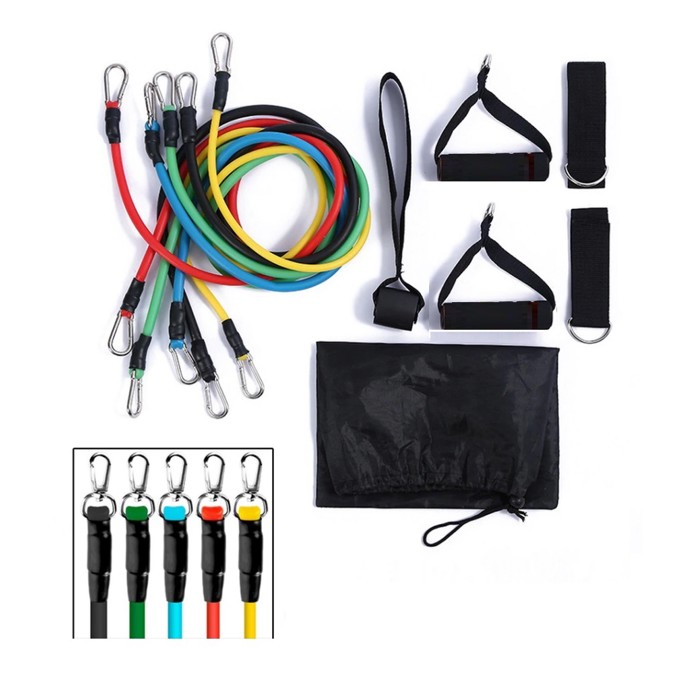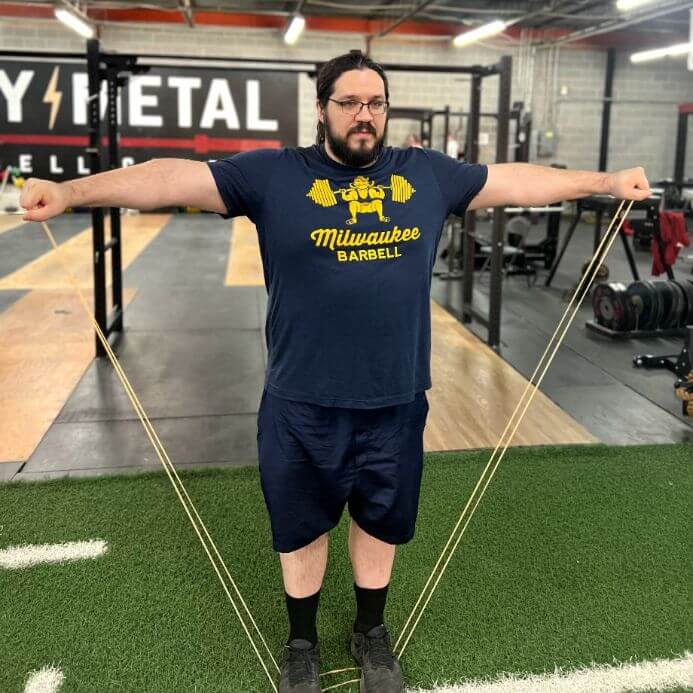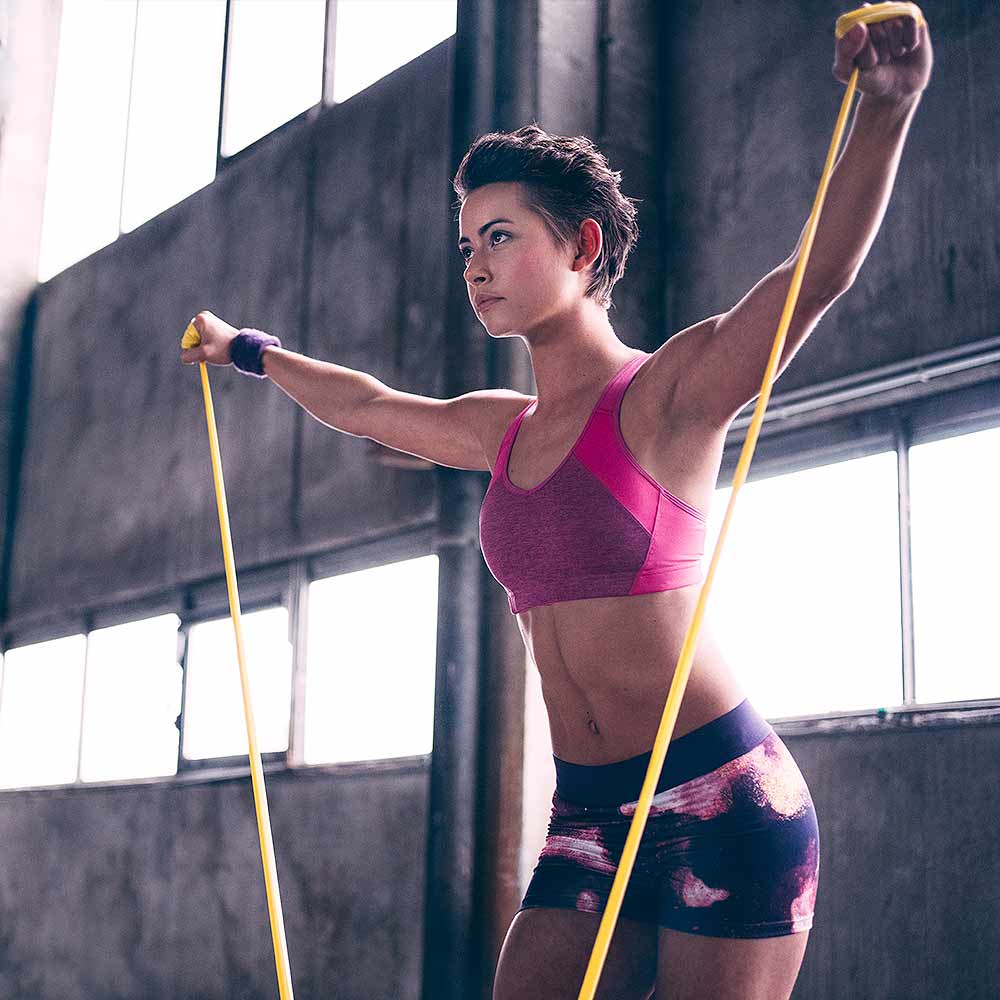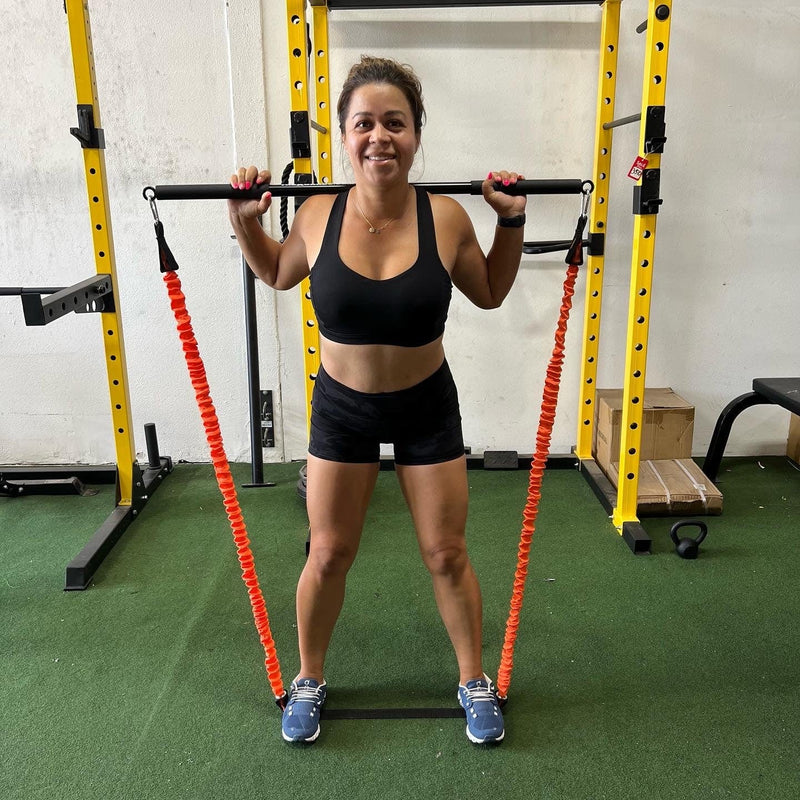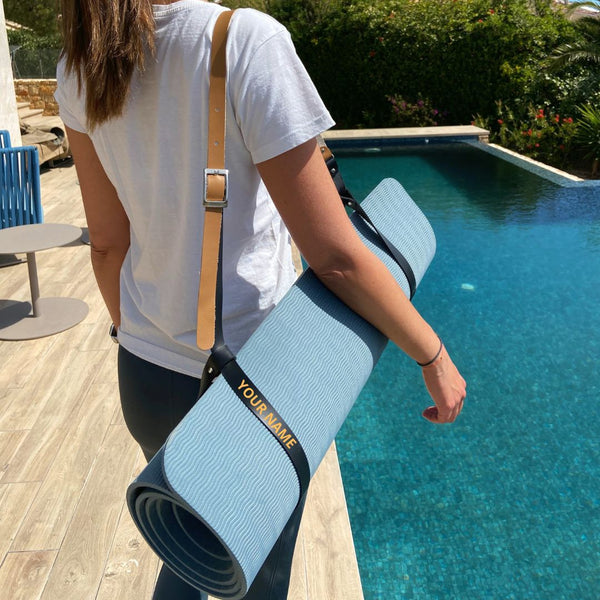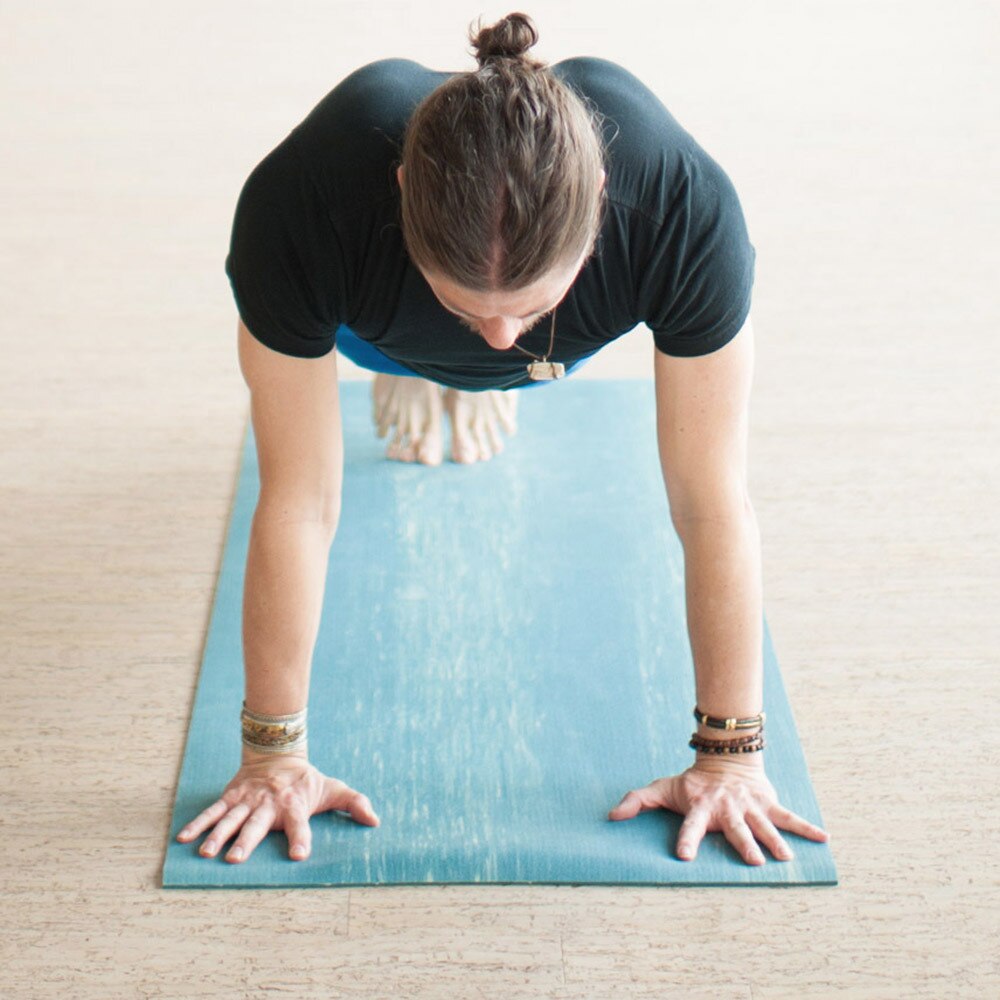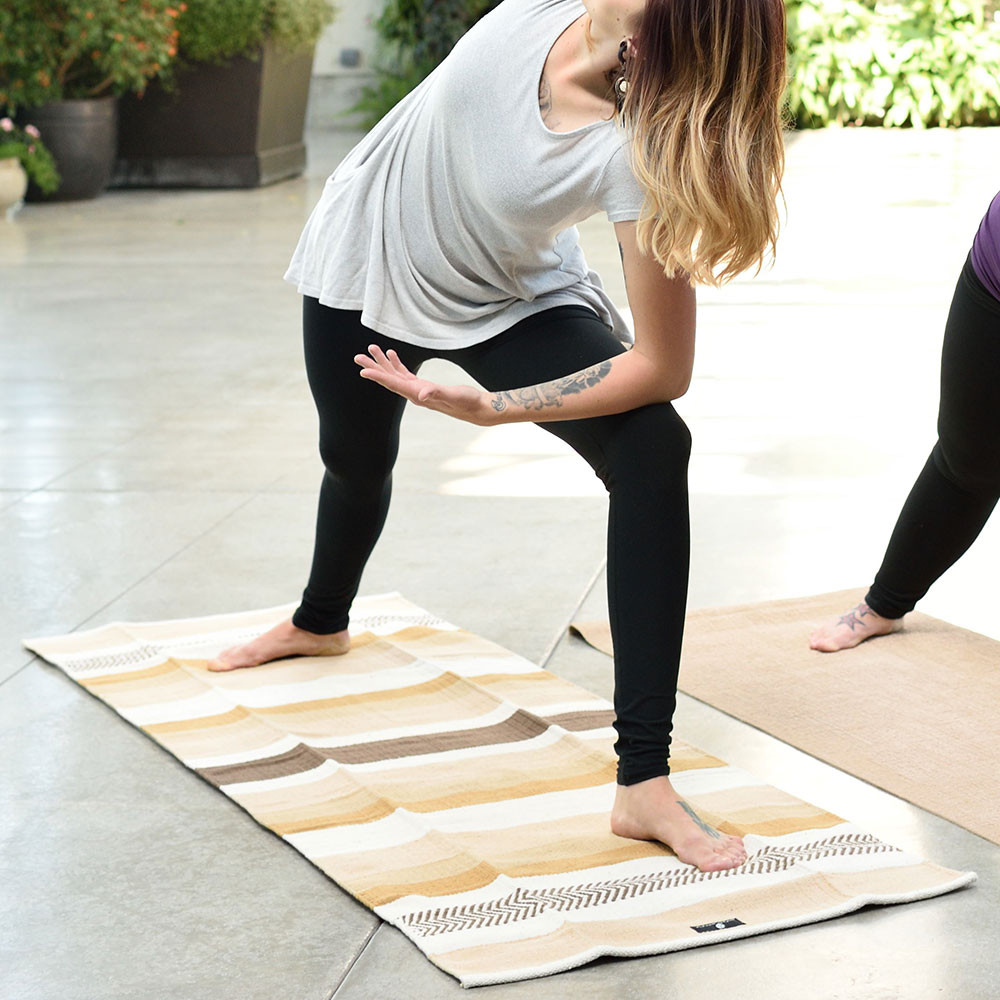Introduction to Resistance Band Training
Resistance band training offers a versatile workout experience. These bands come in various sizes, strengths, and styles to suit different fitness levels and goals. Ideal for home workouts, resistance bands are lightweight, portable, and effective. To begin, resistance bands function through the application of tension. This tension creates resistance, which muscles work against to strengthen and tone. They are especially good for targeting specific muscle groups. Moreover, they are less intimidating than heavy weights and easier on the joints.
Here’s why incorporating a resistance bands set into your exercise routine is beneficial:
- Adaptability: They’re adaptable to multiple fitness levels and can be used for a wide range of exercises.
- Space-Efficient: Resistance bands are perfect for small spaces, making them a go-to for home gyms.
- Cost-Effective: They provide an affordable option to diversify workouts without expensive equipment.
- Low-Impact Workouts: Suitable for all age groups, offering a low-impact form of strength training.
- Versatility: You can perform both upper and lower body workouts effectively.
- Portable: Easy to carry, you can take your resistance band set anywhere, ensuring you never miss a workout.
- Improves Exercise Quality: They help in improving the quality of exercises by controlling the tension throughout the movement.
When starting with a resistance bands set, it is crucial to select the right type. Before jumping into workouts, ensure the bands you choose match your current fitness level and the exercises you plan to perform. A well-chosen set can make all the difference in your fitness journey. In the following sections, we’ll look at how to choose the right set, various exercises to try, and tips to get the most out of your resistance band workouts.
Choosing the Right Resistance Bands Set
Selecting an appropriate resistance bands set is vital for an effective workout. It’s important to consider several factors when making your choice. Here’s how to select the right set:
- Assess Your Fitness Level: Begin by evaluating your current strength and fitness level. This assessment helps in choosing bands that provide the right tension level.
- Consider the Variety: Bands come in various thicknesses and lengths. A set with a variety of bands gives flexible workout options.
- Check for Accessories: Some sets include handles, door anchors, and ankle straps. These can enhance your exercise routine.
- Quality Material: Look for bands made from durable, high-quality materials to ensure longevity and safety.
- Understand the Resistance Level: Each color in a set usually represents different resistance levels. Get familiar with these levels.
- Read Reviews: Know what other users say about the set you’re considering. Positive reviews often indicate a good choice.
- Budget-Friendly: Ensure the set you choose is within your budget but does not compromise on quality.
A well-selected set will not only match your current requirements but also cater to increasing resistance needs as you progress. Always test the bands for comfort and the right resistance level before starting your workouts.
Warm-Up Exercises with Resistance Bands
Before diving into intense workouts, it’s essential to prepare your body with warm-up exercises. Using a resistance bands set for warm-up can improve your workout performance and decrease the risk of injury. Here are some simple warm-up exercises to get your muscles ready:
- Marching in Place: Stand with your feet hip-width apart and the band under both feet. With a handle in each hand, march in place, lifting your knees high. This gets the blood flowing.
- Shoulder Circles: Place the band under one foot and hold it with the opposite hand. Gently perform shoulder circles to loosen up the shoulder joint.
- Side Steps: Step on the band with both feet, shoulder-width apart, and cross the band in front of you. Step to the side, maintaining resistance, to activate your leg and hip muscles.
- Standing Row: Anchor the band at elbow height. Face the anchor and pull the bands towards you, squeezing your shoulder blades together. It mobilizes the upper back muscles.
- Leg Swings: Secure the band around one ankle and swing your leg forward and back. This dynamic stretch warms up your hip flexors and hamstrings.
- Arm Crosses: Grasp the band with both hands and stretch it out in front of you. Then draw your arms back, expanding your chest, and cross them again. It warms up the chest and arms.
- Banded Squats: Stand on the band with feet shoulder-width and hold the other end with your hands up to shoulder level. Perform squats to engage the lower body.
These exercises gradually increase your heart rate and muscle temperature, which is vital for a safer and more efficient workout. Remember to start with a light resistance band and focus on form to maximize the benefits of your warm-up.
Upper Body Workouts Using Resistance Bands
Resistance bands set can transform your upper body workout regimen. Here’s a structured approach to building strength and muscle with your bands:
- Chest Press: Secure the band behind you at chest level. Face away, holding each end with your hands. Press forward, squeezing chest muscles.
- Bicep Curls: Stand on the band, holding an end in each hand. Curl your arms upward, focusing on your biceps.
- Tricep Kickbacks: Hinge forward with the band underfoot, and pull the band backward, keeping your arms tight by your sides.
- Overhead Shoulder Press: Stand on the band and, holding each end, press your hands above your head.
- Lateral Raises: Step on the middle of the band and lift arms straight out to your sides.
- Front Raises: Step on the band, hold the ends, and lift your arms straight in front of you to shoulder height.
- Bent-Over Rows: With the band under your feet, bend your knees slightly and pull the band towards your waist.
Incorporating these exercises into your workout routine will target your chest, arms, shoulders, and upper back. To avoid injury, always ensure the band is secure before starting an exercise. Control the movement both on the lift and the release to maximize muscle engagement. Gradually increase the resistance as you become stronger. Remember not to rush the exercises; proper form is key for the best results. By regularly working these movements into your fitness regimen, you’ll see noticeable improvements in muscle tone and overall upper body strength.
Lower Body Workouts with Resistance Bands
Resistance bands set can boost lower body strength and tone muscles effectively. Use these exercises to target your thighs, hips, and calves;
- Squats: Stand on the band with your feet shoulder-width apart. Hold the ends at shoulder height and squat down as if you’re sitting on a chair. Rise up slowly for full engagement.
- Lunges: With the band under your front foot, step back into a lunge. Hold both ends of the band at chest level, ensuring tension. Alternate legs for balance.
- Glute Bridge: Lie on your back with a band around your thighs, just above the knees. Lift your hips high, squeezing your glutes, then lower them back down.
- Leg Presses: Sit on the floor with legs extended. Loop the band over your feet and hold the ends. Press against the band, extending and bending your legs.
- Calf Raises: Stand with feet hip-width apart, band under the balls of your feet. Rise onto your tiptoes, tightening your calf muscles, then lower with control.
- Lateral Band Walks: Place a band above your ankles or knees. Walk side to side, keeping tension in the band. Focus on engaging the side of your hips.
- Standing Leg Extensions: Stand with the band looped around one ankle, anchored to a low point. Extend the leg back and up, then return with control.
For each exercise, do not rush the movements. Focus on form and the muscle group you are targeting. Ensure the band is snug but not too tight to limit movement. With consistency, these lower body exercises will build muscle and enhance your overall workout results.
Core Strengthening Exercises with Resistance Bands
A resistance bands set is not just for the arms and legs. It’s ideal also for building a strong core. Core exercises with bands improve posture, balance, and performance in all activities. Here are some effective core exercises to try:
- Pallof Press: Stand side-on to a band attached to a secure point. Hold the band with both hands in front of your chest, then press your hands forward. Return to chest and repeat. Keep your core tight.
- Woodchoppers: Anchor the band high and hold it with both hands. In a smooth motion, pull the band down and across your body, then slowly return to starting position. Swap sides.
- Russian Twists: Sit with legs bent, feet lifted. Hold the band with both hands. Twist your torso side to side, keeping your arms slightly bent.
- Plank Pulls: In a plank position, place the band around your feet. Pull one end towards your waist with one hand, then alternate. Engage your core to stay steady.
- Bicycle Crunches: Lie on your back, band around your feet. Pedal your legs in the air as if cycling, pulling the band with opposite hand to knee.
- Leg Raises: Lie on your back, band looped around your feet. Raise your legs together, then lower without touching the floor. Engage your lower abs.
Remember to breathe steadily through each exercise and focus on slow, controlled movements. Start with fewer repetitions, gradually increasing as your core gets stronger. Your resistance bands set can turn any room into a core workout haven.
Resistance Band Training for Flexibility and Mobility
Resistance bands set are not only for strength training. They are great for improving flexibility and mobility. With the right exercises, you can enhance your range of motion and reduce muscle stiffness.
- Leg Stretches: Sit on the floor and loop a band around your foot. Pull gently to stretch your hamstrings. Swap legs.
- Chest Stretch: Hold the band with both hands behind your back. Stretch your arms and open your chest.
- Shoulder Stretch: Grip the band over your head with both hands. Pull your hands apart to stretch your shoulders.
- Torso Twists: Hold the band with arms straight in front of you. Rotate your upper body while keeping hips forward.
- Hip Flexor Stretch: Kneel and place the band under your front foot. Lean forward for a deep hip stretch.
- Ankle Mobility: Loop the band around one ankle and move your foot in various directions.
These exercises will keep your muscles and joints healthy. Regular practice improves performance in other workouts too. Aim for a mix of strength, flexibility, and mobility training in your routine. This balance will help prevent injuries and keep you fit for daily activities.
Cool Down and Stretching with Resistance Bands
After completing your workout, it’s important to cool down and stretch. Resistance bands can aid in performing soothing stretches. These stretches help your muscles recover and prevent soreness. Here are some effective cool-down stretches:
- Hamstring Stretch: Sit on the floor with legs extended. Loop a band around one foot. Gently pull your toes towards you, keeping your leg straight. Hold the stretch and then switch legs.
- Quad Stretch: Stand and use the band to pull one foot towards your buttocks. Keep your knees together and hold. Switch to the other leg after.
- Arm and Shoulder Stretch: Hold the band with both hands in front of you. Raise your arms, then lower them behind your head to stretch your arms and shoulders.
- Triceps Stretch: Hold the band in one hand and stretch it behind your back. Grab the other end with your opposite hand and pull gently.
- Side Bends: Stand with feet hip-width apart. Hold the band overhead with both hands. Bend to one side, return to center, then bend to the other side.
- Cat-Cow Stretch: On your hands and knees, loop the band around your back. Arch your back up and down, pushing against the band’s resistance.
- Calf Stretch: Step on the band with one foot and pull the other end with your hands. Keep one leg straight, heel on the ground, and stretch.
Ensure that you breathe deeply during these stretches for relaxation. Hold each stretch for about 20 to 30 seconds. With resistance bands, you can adjust the tension to fit your flexibility level. This makes them ideal for cool-down stretches. Remember to store your bands properly after use to keep them in good condition.
Tips for Maximizing Your Resistance Band Workouts at Home
To make the most of your home workouts with a resistance bands set, consider the following tips:
- Stay Consistent: Stick to a schedule. Regular sessions yield better results.
- Focus on Form: Prioritize the quality of movement over speed or resistance levels.
- Mix It Up: Alternate between upper body, lower body, and core exercises. Variety is key.
- Keep Intensity High: Shorten rest times or increase reps to keep workouts challenging.
- Track Progress: Jot down the resistance levels and reps to see your improvement.
- Stay Hydrated: Drink water throughout your workout to stay energized and alert.
- Use a Mirror: Check your form by exercising in front of a mirror.
- Be Patient: Results take time. Keep at it, and you will see changes.
- Listen to Your Body: If something hurts, stop. Modify exercises to avoid injury.
Follow these tips, and you’ll maximize the effectiveness of your resistance band workouts. Remember that consistency and proper technique are more valuable than how heavy or how many reps you can do. Add these principles to your workout routine and enjoy the journey towards improved fitness with your resistance bands set.
Storing and Caring for Your Resistance Bands
Proper storage and care of your resistance bands set can prolong their lifespan and ensure safety. Here are simple steps to take after your workouts:
- Keep Them Clean: Wipe your bands with a damp cloth after use. Avoid using harsh cleaners.
- Dry Thoroughly: If they’re wet, lay them flat to dry before storing them away.
- Avoid Direct Sunlight: Store your bands in a cool, dark place to prevent damage from UV rays.
- Keep Them Flat: Don’t crumple or fold your bands. Store them flat or hang them up.
- Check for Wear: Regularly inspect your bands for any tears or signs of wear.
- No Sharp Objects: Store away from sharp objects to avoid punctures or cuts.
- Roll, Don’t Fold: Rolling your bands can reduce chances of creating weak points.
- Separate from Other Equipment: If possible, keep your resistance bands set separate from other fitness gear.
By following these care instructions, your resistance bands set will remain in good condition for upcoming workouts. Reliable, well-cared-for bands are integral to safe and effective home training sessions.

